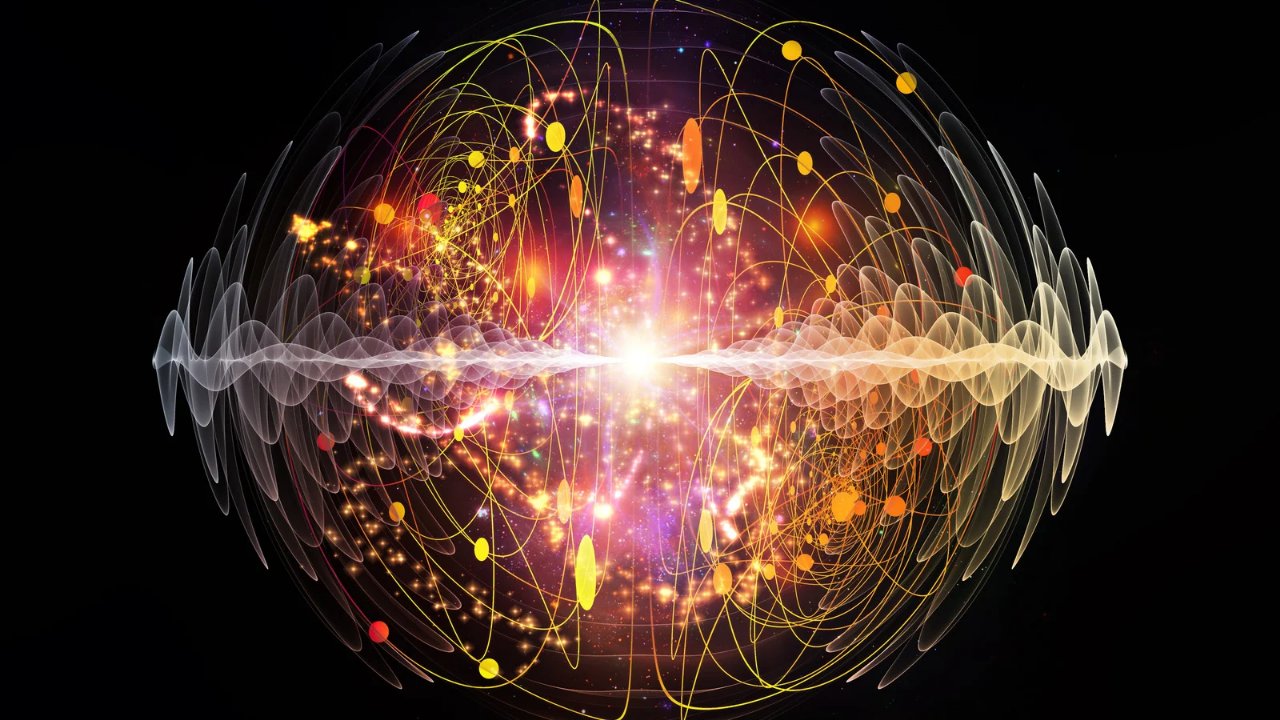The Illusion of Touch
When you touch something — say, a wall or another person’s hand — it feels like contact is happening. You feel pressure, warmth, texture. But at the atomic level, your skin never truly meets the other surface.
That’s because atoms — the building blocks of everything — are mostly empty space.
Imagine a tiny marble in the middle of a football field. That marble is the nucleus (where protons and neutrons live). The field? That’s the space the electrons orbit around it.
Now, when two atoms come close, their outermost parts — the electrons — get near each other. But here’s the catch: electrons don’t like being close to other electrons.
Why? Because of electromagnetic resistance.
What Is Electromagnetic Resistance?
Electromagnetic resistance is the pushback that happens when two negatively charged things (like electrons) get close.
Think of it like two magnets. Try pushing the same poles (north-to-north or south-to-south) together — they resist each other. You can’t make them touch no matter how hard you try. That’s because their magnetic fields are repelling. See Electromagnetism
Electrons behave the same way, except on an atomic scale. When your hand approaches another surface, the electrons in your skin repel the electrons in the object. This repulsion creates a force field — an invisible cushion that prevents actual contact.
What you feel as “touch” is the pressure of these electric fields pushing against each other.
You never touch the wall — you feel the wall’s resistance pushing back on your electrons.
A Wave of Forces
Electrons don’t just sit still; they behave like tiny waves that occupy regions of space. These wave-like clouds don’t overlap easily because of a rule in quantum physics called the Pauli Exclusion Principle — it says no two electrons can occupy the same quantum state at the same time.
So even if two atoms come very close, their electrons refuse to share the same space. The closer they try to get, the stronger the repulsion grows — like a spring being compressed.
That “springiness” of electron clouds is what creates the sensation of hardness or pressure.
When you press your palm against a table, you’re not pressing into the wood — you’re compressing a sea of electromagnetic waves pushing back at you.
Everyday Examples
- Walking on the ground:
You’re not standing on the floor — you’re hovering nanometers above it, supported by the repulsion between the electrons in your feet and those in the floor. - Typing on your phone:
Every tap on your screen is a microscopic standoff between your finger’s electrons and the glass’s electrons. - Holding hands:
Even during the most intimate human connection, there’s still a tiny electromagnetic gap — an eternal buffer of quantum space.
It sounds cold or distant, but it’s actually poetic: our world holds together not through contact, but through invisible harmony — a constant dance of forces.
Why Don’t Things Fall Apart Then?
If atoms never really touch, why doesn’t your hand pass through the wall?
Because those same electromagnetic forces that prevent contact also give matter its structure and solidity.
Without them, atoms would collapse into each other like ghosts. The repulsion between electrons creates stability, defining the boundaries of objects and giving matter its “shape.”
So, in a way, electromagnetic resistance is what makes “solid” possible.
It’s the reason you can sit on a chair, hold a pen, or feel the pulse of a heartbeat.
Seeing the Universe Differently
Realizing you’ve never truly “touched” anything might sound unsettling, but it’s also a window into how profoundly connected we are to the universe.
Everything is made of the same ingredients — atoms wrapped in fields of energy — constantly interacting without colliding.
Our reality is woven not by contact, but by forces — invisible threads tying everything together.
Every experience of touch is a conversation between electric fields.
When you touch someone’s hand, your atoms aren’t merging — they’re communicating.
They’re saying, “I’m here. You’re there. Let’s keep our space, but let’s connect.”
The Poetry of Distance
Maybe this untouchable nature of matter isn’t a flaw — maybe it’s perfection.
We never merge completely, but through resistance, we experience connection.
The world you feel under your fingers is not one of direct contact, but one of electromagnetic intimacy — a cosmic push and pull that defines every solid thing you know.
So, the next time you reach out and touch something, remember:
You’re not breaking barriers — you’re feeling the very field that holds the universe together.
In summary:
- Atoms never touch because electrons repel through electromagnetic forces.
- This repulsion creates a force we perceive as “touch.”
- Without electromagnetic resistance, matter would collapse.
- Everything solid — everything we feel — is built on this invisible resistance.
You’ve never truly touched anything — yet through this delicate dance of forces, you touch everything.
Written for: Utopedia
Simplifying science for curious minds.


